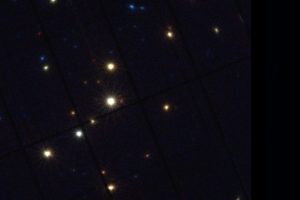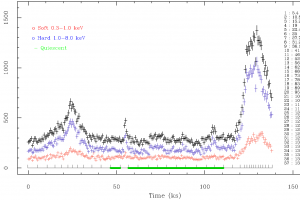From the Gaia-ESO Survey, the analysis of the rotational velocity of the B stars in 8 stellar clusters of the Carena Complex presented in “The Gaia-ESO Survey: projected rotational velocities of B stars in the Carina Nebula” of W Santos (Observatorio Nacional MCTI, Brazil)

Rotation velocities measured for 330 B-type stars in eight stellar clusters of the Carina complex, thanks to the Gaia-ESO Survey. Stars rotate on their axes. Some, such as young stars, spin very rapidly, with rotation periods as short as one or two days. In other cases, like red giant stars, rotation is much slower, with periods lasting several months.
» Read more

